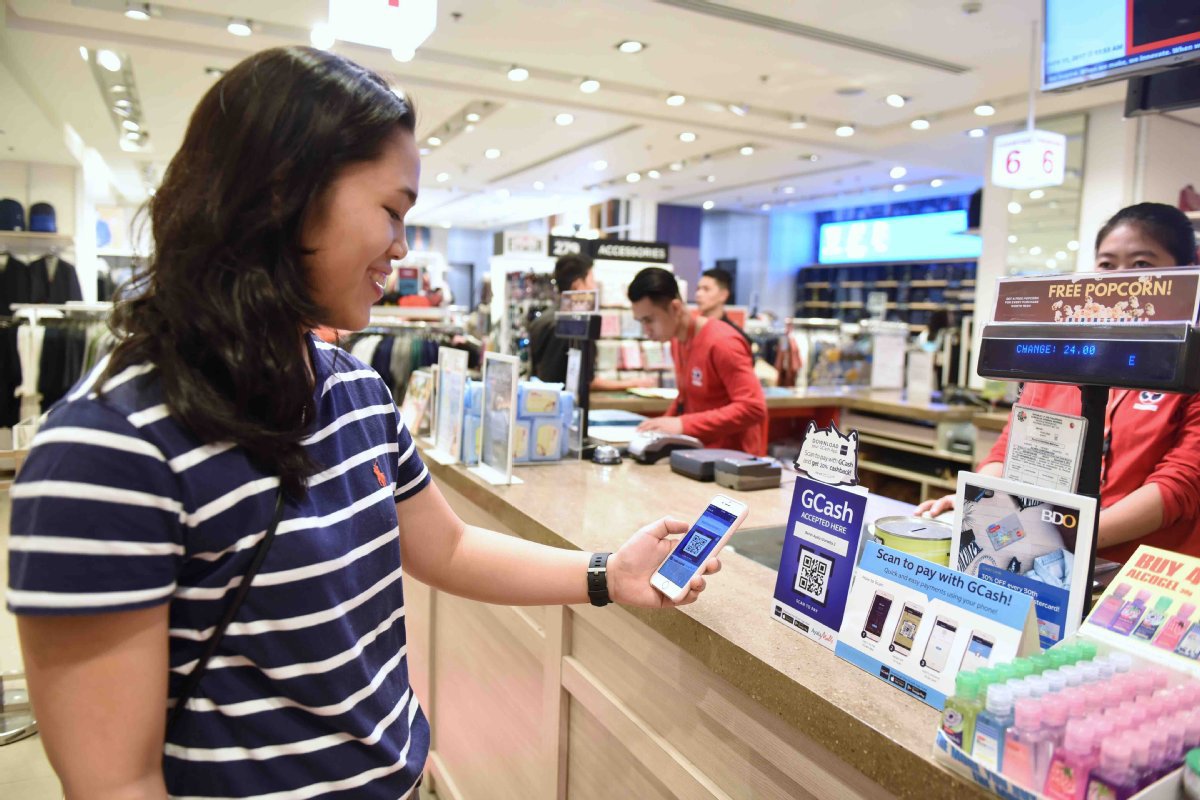New ways to pay make life easier on the road
By Cecily Liu and Wang Mingjie in London | China Daily | Updated: 2018-10-19 09:58

More countries and regions accept China's mobile platforms
China's mobile payment platforms, including Alibaba's Alipay, Tencent's WeChat Pay and UnionPay's QuickPass, are rapidly expanding their international footprints, pioneering a global payment revolution to determine how money changes hands.
During the weeklong holiday to mark National Day, Chinese shoppers spent more in the United Kingdom than in any other country in Europe, the Middle East and Africa.
At Bicester Village, a shopping hub for designer goods near Oxford, they bought 50 percent more than they did in the UK as a whole, according to Alipay.
This made Bicester the No 1 outlet globally among Chinese outbound tourists in terms of total spending through Alipay, China's leading mobile payment platform, during the holiday week.
Restaurants in London's Chinatown were also a popular destination, with 7.5 percent of all Alipay transactions in the UK taking place there.
Shoppers using Alipay spent an average of $369 each in the UK during the week, higher than the global average of $289.
The fast expansion of China's mobile payment platforms has significant implications for the spending habits of outbound travelers.
Alipay is now accepted in about 40 countries and regions, and supports tax refund activities at 80 airports.
WeChat Pay is available in more than 40 countries and regions, and 800 million users have linked their bank accounts or credit cards to the service.
QuickPass is accepted across 1 million point-of-sale terminals in some 20 countries and regions outside the Chinese mainland.
A Nielsen survey published in July showed that 65 percent of Chinese outbound travelers used mobile payments on trips. Chinese mobile payment platforms have become so widely available that some travelers who were surveyed said they had struggled to spend all the 100 euros ($116) in cash they had prepared for their trips.
Eighty-four percent of those questioned said they had also noticed an increase in the acceptance rate of Chinese mobile payment platforms by overseas merchants, compared with two years ago.
Wang Li, head of Alipay in Europe, the Middle East and Africa, said: "We hope to champion the concept of 'smart travel' to make payment and travel easy. We want to build a big network globally so that Chinese tourists traveling abroad can feel that they are enjoying payment convenience as if they are still in China.
"Our expansion overseas has two considerations. We see the outbound Chinese tourist market as a big opportunity, but also we think from our customers' perspective, to provide them a service they truly need."
Growth factors
Central to Chinese travelers' deciding to use Alipay, WeChat Pay and QuickPass overseas is the fact they are already familiar with and trust these payment platforms.
For outbound travelers, the two key benefits are that they no longer need to carry large amounts of foreign currency on their travels, and they can also secure good exchange rates.
These are guaranteed because Alipay, WeChat Pay and UnionPay all convert prices of foreign products from local currencies directly into yuan. In comparison, alternative platforms, including Visa and Mastercard, first convert product prices into US dollars and then into yuan, passing on the additional conversion costs to end users.
Unlike the UK, the United States and other developed markets, where consumers are familiar and comfortable with card payments, until a few years ago China was largely a cash-transaction-based society before the advent of mobile payments.
The extent of the popularity of these payments in China is perhaps hard to imagine by those living outside the country.
Not only are mobile payments taken for granted for shopping, traveling, accommodations and utilities payments, they are also now available at many street markets, pop-up shops, and are used for the instant transfer of cash between friends.
China is now the world's biggest mobile payment market. Its market size reached 40.36 trillion yuan ($6 trillion) in the first quarter of this year, according to a report by Analysys, a Beijing data research company.
Alipay and WeChat Pay account for 53.76 percent and 38.95 percent of market share, respectively, in terms of transaction amount.
WeChat Pay now has more than 900 million active users, while Alipay has over 500 million. These numbers are incredible compared with Apple Pay's 127 million active users - and they are growing.
Having captured the domestic market, in recent years Chinese mobile payment providers have begun to focus increasingly on overseas growth, starting with the Chinese outbound travel market.
Alipay first entered Europe in 2015, when it became accepted at Tripidi, a luxury retailer at Frankfurt Airport in Germany.
Payment is easy. Customers just open the Alipay app on their mobiles, scan a QR code provided by Tripidi, type in the amount they wish to pay, and confirm the transaction. The customers pay in yuan, Tripidi receives euros, and Alipay makes the conversion in between.
From there, Alipay expanded to many other well-known shopping locations, including Harrods in London and Printemps in Paris. In 2016 alone, 120 million outbound Chinese travelers used Alipay overseas.
WeChat Pay, which processes payment through its own app in a method similar to that used by Alipay, became available in Europe last year, with a key venue being Camden Market in London.
Meanwhile, Chinese outbound tourist numbers are growing rapidly, pointing to more opportunities.
Last year, Chinese travelers made more than 130 million outbound trips and spent $115 billion overseas, making China the world's biggest source of outbound tourism, according to a report published in March by the China Tourism Academy and the online travel service Ctrip.
Further growth appears imminent, given that China's middle-class population of 300 million is forecast to rise to 550 million by 2022.
Jurg Schneider, a spokesman for Six Payment Services in the Swiss city of Zurich, which supports merchants across Europe in accepting Chinese payment platform transactions, said, "Across luxury brands, souvenir shops, hotels and restaurants, so many merchants are keen to offer their Chinese customers UnionPay, Alipay and WeChat Pay."
In 2006, Six Payment Services made payments through UnionPay cards available for its customers, and did the same for Alipay 10 years later. It is now in talks with WeChat Pay.
"Our client merchants want all three, because they want to enable Chinese shoppers to pay using a method they prefer, know and trust," Schneider said.
Six Payment Services has processed UnionPay and Alipay transactions worth more than 2 billion Swiss francs ($2 billion), and not one has encountered difficulties or fraud.
Other international banking institutions helping Chinese cross-border payment systems to receive payment include Wirecard in Germany, Ingenico and BNP Paribas in France, Unicredit in Italy, Barclays and Santander UK in Britain, and ePassi in Finland.
Additional benefits
Alipay and WeChat Pay also operate as platforms to help international retailers communicate their products and services to Chinese customers.
Alipay's mobile app has a "discovery platform", which allows Chinese outbound travelers to search for shops, restaurants and tourist attractions in the country they are visiting.
The platform has become so popular in informing users about these retailers' products that, to date, 570,000 European merchants in 20 countries have signed up.
Similarly, many merchants who accept WeChat Pay have also started official WeChat accounts, which they use to promote their products through descriptions, photos and stories. They can also share the latest information about shops' opening hours or seasonal promotions to aid customer experience.
Meanwhile, UnionPay has targeted the outbound student market to offer secure and convenient tuition transactions that benefit both outbound students and their schools. It has partnered with more than 2,000 schools and universities in the US, the UK, Australia and New Zealand, among other countries.
Some academic institutions accept online payment, meaning students can pay while they are still in China preparing to travel overseas to study. Others accept payment in-person, where students just need to present their UnionPay card and have the transaction processed immediately. UnionPay is being increasingly accepted in university dormitories, libraries and student centers.
Challenges ahead
Despite their rapid growth, the acceptance rate of Chinese payment platforms among non-Chinese customers remains low.
One key challenge is the limited potential for mobile payment growth in markets where customers are accustomed to credit card payments.
A survey conducted by US online transaction service provider Paypal found that only 3 percent of Singaporeans use mobile wallets regularly, in sharp contrast to 48 percent in China.
This year, Tencent announced a change of direction, saying it would not seek to offer more local payment wallets to overseas customers in the next three years.
UnionPay faces an equally tough journey to compete for market share with rivals Visa and Mastercard. While Union-Pay transactions accounted for 15 percent of global card transactions in 2016, just behind Visa and Mastercard, most of these transactions were made in China.
Less than 2 percent of the UnionPay cards in use are issued outside China, showing there is a long way to go in penetrating the international market.























